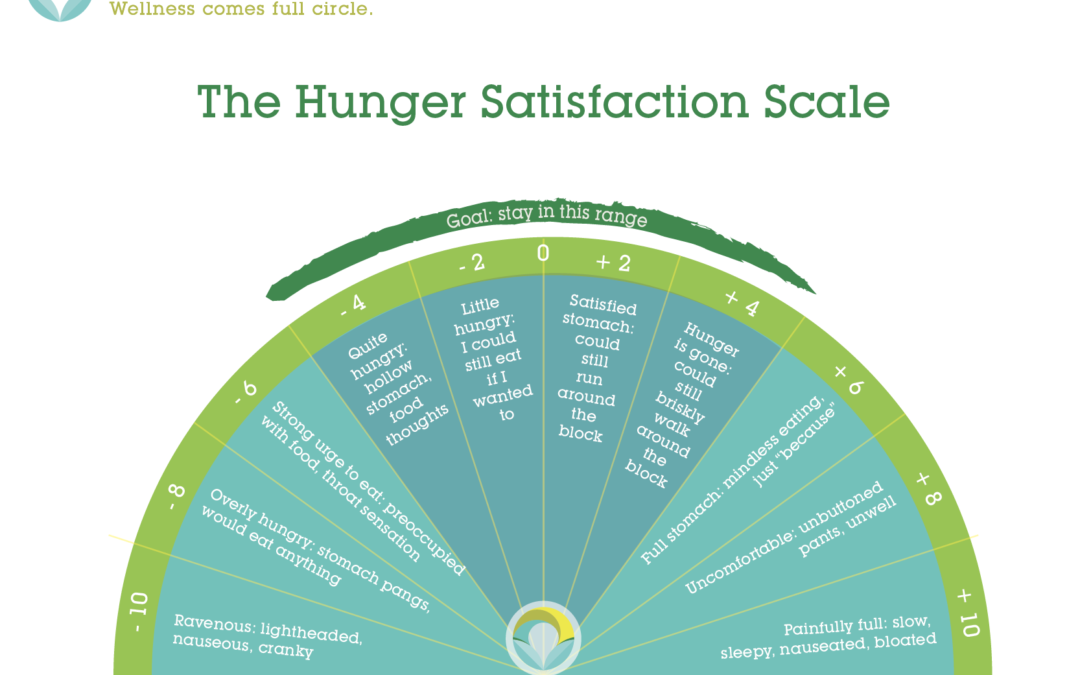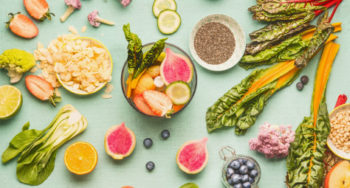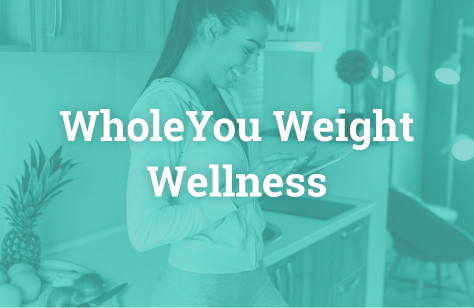Basis of food addiction
The idea that a person can be addicted to food has recently gained increasing support, because we are now developing a body of knowledge from brain imaging and other studies of the effects of compulsive overeating on centers in the brain that create pleasure. Experiments in animals and humans show that, for some people, the same reward and pleasure centers of the brain are triggered by addictive drugs like cocaine and heroin are also activated by food, especially highly palatable foods. Highly palatable foods are foods rich in:
- Sugar
- Fat
- Salt
Like addictive drugs, highly palatable foods trigger feel-good brain chemicals such as dopamine. Once people experience pleasure associated with increased dopamine transmission in the brain's reward pathway from eating certain foods, they quickly feel the need to eat again and can often be as hard to “quit” as those high-risk recreational drugs.
The reward signals from highly palatable foods may override other signals of fullness and satisfaction. As a result, people keep eating, even when they're not hungry. Compulsive overeating is 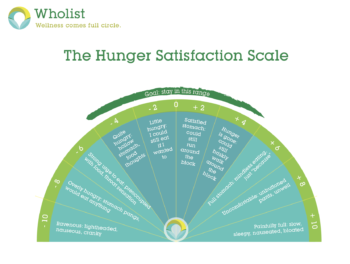 a type of behavioral addiction meaning that someone can become preoccupied with a behavior (such as eating, or gambling, or shopping) that triggers intense pleasure. People with food addictions lose control over their eating behavior and find themselves spending excessive amounts of time involved with food and overeating, or anticipating the emotional effects of compulsive overeating.
a type of behavioral addiction meaning that someone can become preoccupied with a behavior (such as eating, or gambling, or shopping) that triggers intense pleasure. People with food addictions lose control over their eating behavior and find themselves spending excessive amounts of time involved with food and overeating, or anticipating the emotional effects of compulsive overeating.
Why does this happen? It seems like it is related to that dopamine reward neurotransmitter. Studies have shown that as BMI increases, dopamine decreases…. And as BMI decreases, dopamine increases. With low levels of dopamine, you have depression/ anxiety and the need to FILL the dopamine with highly palatable reward foods (refined, fatty, sugary) and when those foods are gone, your reward center is forcing you to fill it back up to get that feeling of wellbeing.
As with other addictions, you can see both tolerance (needing more and more to get same feeling) and withdrawal (physical symptoms of not having the neurotransmitter release)
So once again, as I’m always talking to my lifestyle medicine and weight clients, our adipose tissue is a hormonally active organ, connected to the gut-brain axis integrally. It isn’t willpower, it’s skillpower.
People who show signs of food addiction may also develop a kind of tolerance to food. They eat more and more, only to find that food satisfies them less and less. And they continue to eat even when they no longer have pleasure, have withdrawal/ anxiety /stress around food, when it is affecting their relationshipsand their health. Yale Rudd Center for Food Science has a Yale Food Addiction Scale, a questionnaire that you can google and take to see if this you.
Microbiome shifts and food addiction?
We think, new research is coming out all of the time, this is a brand new area of study, that gut microbiota contribute to hunger signals and to obesity through metabolism of nutrients and their influence on mood, the hunger hormones leptin and ghrelin, and the dopamine motivational and reward system.
If we aren’t feeding the gut bacteria the nutrients they need to stay healthy, it seems that they can directly and indirectly mess with our energy metabolism, expenditure and in turn mess with what we “choose” or are forced to put into us to feed them through changes in appetite neuropeptides in the hippocampus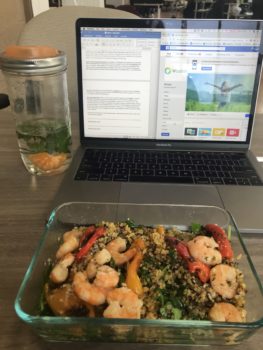
Strategies to decrease food addiction
Because digestion begins in the brain, the very thought, memory, sight or smell of food can trigger cravings. There are a few types of cravings in my opinion. Body hunger *you are actually hungry for something you are missing and btw this really happens because our bodies know how to create our own energy from what we’ve stored and we are not starving. Mind hunger – emotional needs, stress, etc. These are the trickiest because this is where the addiction is coming in, from filling voids/ buffering emotions withthe dopamine surges you get from low nutrition foods (that by the way were created by industry to do just that). Situation hunger- memories brought on by sights and smells and environments (good or bad) of ‘what you eat when’
When it comes down to it, it’s what I’m constantly talking about with my clients. It is about evidence, education and empowerment. You need to have a good understanding of the evidence of the what is happening so you can SEE how your choices are assisting your body in helping or hurting your goals andto understand that this isn’t all in your control so you stop feeling so frustrated and work on the SKILL to the WILL. You need to get the education on what those SKILLS are (coming) and you need to be empowered to know you can do it (this is with the support, kindness, accountability of a coach) because this is a total lifestyle change and a lifelong change.
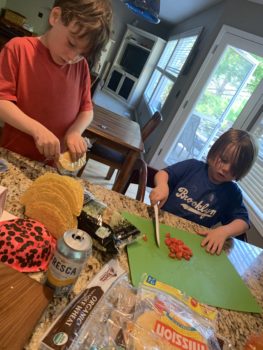 What are those skills?
What are those skills?
- Learning how to interpret body hunger, mind hunger and situational hunger.
- Learning how to receive the sensations from your gut and adipose tissue to your brain, analyzing, delaying action, and choosing what thought to make from them, and acting on the thought not the sensation. It’s basically delaying in order to create a discrepancy between what you feel and what you know and what you want your result to be… your own CBT so to speak, which is what we do in lifestyle medicine and at Wholist.
- Its elimination of added sugars, processed grains flours oils and fats, and instead eating the rainbow of whole veggies and fruits for diversity and adding in whole grains. REAL FOOD, NO PRODUCTS
- It’s getting the skills to create food that it physically satisfying but still created out of the foods we know feed our gut microbiome, as well as provide long term health (it’s all the same stuff), tasting good, real food, appropriate balance of fat/ protein and unprocessed carbs to keep you full longer so you can work on the why and when to eat in a more settled sense of mind.
- No snacking. Eat only when hungry. This means only 3 meals a day (or less if you don’t need it). I actually have a free 7 days No Snacking Challenge that guides you through this! It’s on my website under “other products and services”
- Allowing time for withdrawal to pass. This sometimes can be one week of complete elimination, might be longer. Just realize that it will. Again, this is where support and accountability are key.
- Be a planning machine. You never make good choices in the moment. Calendars, meal planning, and help from coaches.
- Don’t expect to be perfect. You are rewiring your brain to undo a lifestyle of experiences, emotions, habits, neurochemical connections. Remember it isn’t willpower, it’s skillpower, you can’t force your body to do something. You make 700 new neurons per day, be patient, see your stumbles as a way to learn what works better next time, and it’ll happen!
- Miscellaneous: Drink tons of water, herbal teas, kombucha as your main beverages. Work on mindful eating through mindfulness-based stress reduction programs. Be conscientious of your sleep and stress (which will improve in time anyway but are key at the beginning.

©Tamara Kenyon Photography | http://tamarakenyon.com
Who I am
I am Dr Heather Hammerstedt, I have my doctorate in medicine, board certification in emergency medicine and lifestyle medicine, an integrative nutrition health coaching certificate, a medical acupuncture certificate, a masters in public health, and two tiny crazy muppet humans and a hilarious husband who keep me honest. I’m also the CEO and Founder of Wholist, a lifestyle medicine coaching and consulting company that specializes in helping busy professional transform their current and future health futures to meet their goals, all with evidence, education, empowerment delivered by flexible technology to meet you where you are to help you succeed.

